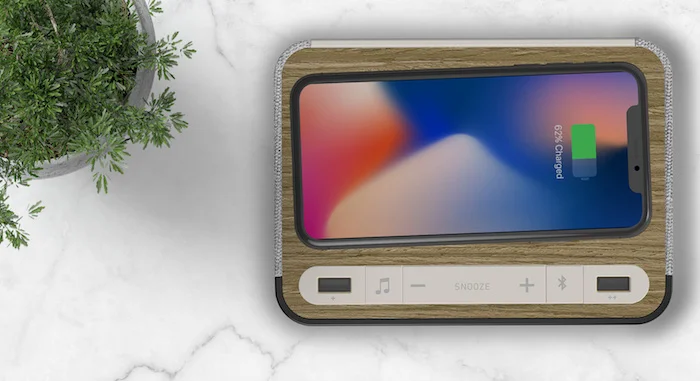The Evolution of the Hotel Alarm Clock - Part 2
Beyond the Alarm, New Standards for the Hotel Nightstand Clock
In part 1 we concluded that the “alarm” isn’t often used, but for those that do it’s still worth keeping. However the real need is the “clock” part, as even though guests can always look at their phone, the most convenient way is to simply glance at the nightstand clock.
So, if it’s not time to pull the plug on the nightstand clock, let’s consider other useful features for the modern guest. How do hoteliers make the device something that resonates with the modern guest and turns this valuable piece of nightstand real estate into a meaningful engagement point?
Charging
In a world obsessed with staying connected, the modern smartphone lover is always searching for a source of power - and the nightstand (first place guests look) has proven to be the most convenient spot for charging outlets. One study revealed that the first thing 57% of guests do when they check-in is charge their phone. And, more importantly, 83% of guests are frustrated if they don’t see a charging outlet at the bedside/nightstand.
Charging outlets can no longer be a last second thought that hoteliers haphazardly throw in. They need to be at the forefront of hotel design. But it can be crowded and not very aesthetically pleasing to put a bulky power strip on the nightstand. While built-in solutions are certainly cleaner, it’s not always practical for a hotel to cut holes in the furniture unless they are going through a renovation or it’s a new property.
A natural alternative is to build charging ports into the alarm clocks themselves. These have been showing up in some capacity for some time. The most common implementation has been adding USB ports, although some options also feature AC outlets. Notable brands like Wyndham and Disney were some of first companies to ditch their old alarm clock for an upgraded solution.
Tip for Hotels: The majority of devices utilize USB charging. The need for AC outlets is diminishing as only laptops require them.
Adding USB outlets to the alarm clock is a great step in the right direction, but as we know technology changes quickly - and around 80% of phones sold today have Qi Wireless Charging. Savvy hoteliers are aware of this and will look for solutions that offer guests both wired and wireless charging.
Bonus: With wireless charging the nightstand is even cleaner and less cluttered when guests can simply set their phone down for a charge without needing to connect a cable.
Bluetooth Speakers
Bluetooth speakers have been growing in popularity in the consumer and hospitality market for years now. It’s universal compatibility means any guest can throw on some music while getting ready for the night without worrying about having the right cable. And believe it or not, research has shown that quality speakers do wonders for a hotel's business.
Benefits aside, it can be hard to justify a budget for something like Bluetooth speakers - especially when many stand alone options cost upwards of $70. Some hotels have Soundbars or other audio connectivity options built into the TV - but another great way to offer Bluetooth without breaking the budget is through the alarm clock. Sure these will cost closer to $90 a unit, but that includes alarm clock functions, charging, AND a bluetooth speaker - by consolidating all three hoteliers cover three nightstand essentials in a cost effective way.
Decor-Driven Design
As you know cool designs resonate with us at Nonstop more than just about anything. Many hoteliers know design has become a driving influence in creating an engaging and differentiated guest experience. And more recently there has been an increased focus in merging technology with modern design to appeal to the dominant travel generation - Millennials.
Despite this emerging trend, one design that seems to be stuck in the past is that of the alarm clock. The clunky black plastic feels out of place next to modern design elements such as wood, leather, and stone. If the nightstand is the first place guests look, shouldn’t hoteliers present it as a complimentary accent to the room?
Now this is easier said than done. There just isn’t a lot of options that combine the things mentioned above in a way that is well designed, differentiated, and feels approachable for guests. However, with the consumer market trending towards well designed electronics for the past few years now, the hospitality industry will act as it normally does and follow suit - meaning decor-driven alarm clocks like these will be making their way into hotels across the world.
Conclusion
The Hotel Alarm Clock has evolved into much more than an alarm and clock - it has the potential to act as an engagement point for guests on one of the most valuable pieces of real estate in the hotel. The key is for hoteliers to consider what guests want the most at the nightstand. While things like easily accessible charging outlets should be priority one, it’s important not to underestimate the value of a differentiated design and added entertainment options like a bluetooth speaker.
In other words the hotel alarm clock is not dying - it’s just getting a makeover.
This was part 2 of a 3 part series. In part 3 we'll discuss the future of the hotel alarm clock and why the features mentioned above are just the beginning.



